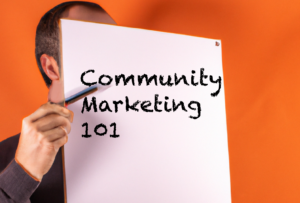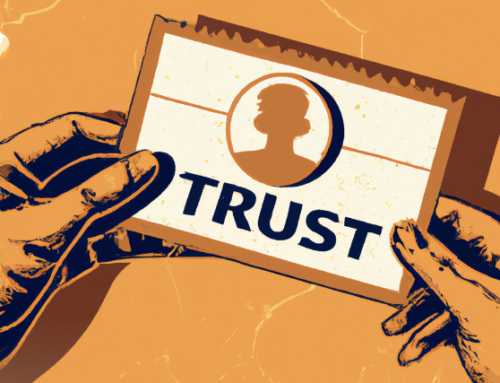By Bekkah Frisch, Marketing Executive
In today’s digital age, businesses are constantly searching for innovative strategies to engage with their target audience. Community marketing has emerged as a powerful approach for brands of today. This type of marketing, which was popularized by marketing pioneer Dr. Philip Kotler, is focused on building connections and fostering meaningful relationships between brands and their customers. While community marketing and social media marketing share some similarities, community marketing offers a different approach to customer relationships that prioritizes true connection over vanity metrics. And although it has existed in various forms for decades, combining the value of community with the reach of digital landscapes creates new synergies that position your brand and its products for success.

Understanding Community Marketing
Community marketing revolves around creating a sense of belonging and connectedness among individuals with shared interests, values, or goals. It aims to build a loyal community of customers who become advocates for a brand. Unlike traditional marketing approaches that prioritize transactions, community marketing focuses on nurturing relationships and facilitating interaction of all kinds—among customers, between customers and brands, and between brands and their customers. By contrast, social media rewards brands for using their pages as a megaphone for brand messaging with frequent posts and short, promotional messaging. All too often, there is not enough time to prioritize customer questions and interactions without jeopardizing a page’s visibility rankings.

Differentiating Community Marketing from Social Media Marketing
While social media marketing and community marketing share certain similarities, they are two distinct strategies. Social media marketing primarily centers around promoting products or services by targeting a wide audience through various platforms. In contrast, community marketing emphasizes fostering connections among a specific group of individuals who share common interests or experiences—in essence, building a brand community.
While it may be possible to conduct community marketing through social media channels (and in fact, that has been the most common practice to date), there is an undeniable power imbalance in relationships formed on social media.
This power dynamic cannot be ignored. Brands are able to analyze their audience based on geography, when users are most active, how users engage with various forms of content as a whole, and brands are also able to set the rules of engagement by banning certain words or phrases. There is nothing inherently wrong with any of these options, but the customer is relegated to a secondary role with little to no say in what information about them gets shared or how they prefer to be interacted with. In addition, social media acts as a third party with all the true control over the relationship’s parameters. (Consider what would happen if a brand page gets erroneously flagged and the social platform decides to shut down all comments on the page’s posts for an undetermined amount of time.)
Community marketing seeks to level the playing field to create a more meaningful, two-way relationship between brands and their fans. But the most effective way to do so is to remove the third-party platforms from the relationship altogether, so that users and brands are the ones who set the guard rails of their relationship.

Community Marketing Centers Connection
At the heart of community marketing lies the concept of connection. By creating a community around your brand, you provide a platform for like-minded individuals to interact, share insights, and form relationships. This sense of belonging strengthens their bond with the brand, generating loyalty and trust.
This softer, more sophisticated approach to marketing builds up to real results by shaping how people feel about your brand. People remember brands that make them feel deeply, genuinely valued. Communities offer meaningful ways for brands and other customers to offer validation and self-worth that goes far beyond the impacts of a specific jingle used in a commercial or the header image on your website.
Community marketing strategies are well-poised to shape the future of marketing as this type of marketing directly addresses Gen Z’s concerns with authenticity.
So, how can brands get started?

Building an Engaged Community
To leverage the power of community marketing, businesses must be ready to invest in creating an engaged and vibrant community. Before beginning, brands must determine where the community will congregate. While social media may be an easy option, it can be difficult to keep toxic internet trolls at bay while creating a true community—as opposed to an audience. A white-label community engagement platform may be a suitable alternative to traditional social platforms. White-label solutions allow the brand to customize interaction opportunities to fit their consumers’ needs, while avoiding unpleasant surprises like changes in functionality or requiring dedicated managers to game an ever-changing algorithm.
After you’ve determined where to host your community, there are several key considerations to help this marketing strategy become a success:
- Identify your target audience: Clearly define your target audience and understand their interests, needs, and preferences. This will help you build a community that resonates with them.
- Provide value: Offer valuable content, resources, or experiences that align with your community’s interests and goals. This positions your brand as a trusted source of information and expertise. Additionally, don’t be afraid to spotlight important contributions from brand customers and fans—not only will this tactic cultivate a new class of brand ambassadors, but it will help your brand project a quiet confidence that further establishes trust in the overall brand.
- Encourage participation: Foster interaction and collaboration within the community. Encourage members to share their insights, experiences, and ideas. This helps create a sense of ownership and involvement. More than engagement for engagement’s sake, it’s important to inspire positive and supportive participation. A community full of internet trolls who simply tear each other down will not do anything to further your brand goals.
- Be responsive and authentic: Actively listen and respond to community members’ feedback and queries. Transparency, authenticity, and caring are key to building trust and long-lasting relationships. Humor doesn’t hurt, either, as long as it’s true to your brand values.

Enhancing Brand ROI through Community Marketing
The long-term benefits of community marketing are staggering. Investing in community marketing can yield significant benefits for your bottom line by encouraging brand ambassadorship, creating organic buzz around the business, and cementing your company’s status as a leader in your field.
Let’s break down some of the more specific benefits to metrics you are likely already tracking:
- Increased customer loyalty: A strong community cultivates a sense of loyalty and belonging among its members. Engaged customers are more likely to become repeat buyers and brand advocates, leading to increased sales and revenue that is not dependent on coupon codes or specific advertising campaigns. This, in turn, has a positive impact on customer lifetime value (LTV) and average order value (AOV).
- Improved customer retention: By fostering meaningful connections, community marketing reduces churn rates. When customers feel connected to a community, they are less likely to switch to a competitor. This shift drives overall improvements to a marketing department’s return on investment (ROI).
- Enhanced brand reputation: A thriving community helps build a positive brand reputation, as satisfied customers share their experiences with others. Word-of-mouth recommendations from community members carry significant weight and can attract new customers, helping reduce customer acquisition costs (CAC).
- Valuable feedback and insights: Engaged communities provide a platform for gathering valuable feedback and insights directly from your target audience. This enables you to make informed business decisions and develop products or services that align with customer needs, providing reliable, free sources of market research and product testing.

Key Takeaways
Community marketing goes beyond traditional marketing methods by prioritizing connections, fostering relationships, and building a loyal customer base. While it may seem similar to social media marketing, there is an important paradigm shift between the two: social media helps your brand find an audience, but community marketing helps your brand build meaningful relationships. The best white-label community platforms will ensure your brand can do this at scale by automating the more menial aspects of engagement—for example, tying unique rewards (perhaps early access to a new product launch) to certain community achievements (like adding content that the community finds helpful 5 days in a row). Discover how Web3 Pro is innovating community marketing in this article on Business Insider.
By investing in community marketing, businesses can enhance customer loyalty, improve retention rates, and improve other important metrics. This type of long-term strategy will ultimately boost the brand’s bottom line and better position it to continue into the future.
When marketers embrace the power of community and two-way relationships with their most valuable customers, brands and consumers alike will be able to truly flourish in the digital landscape.




